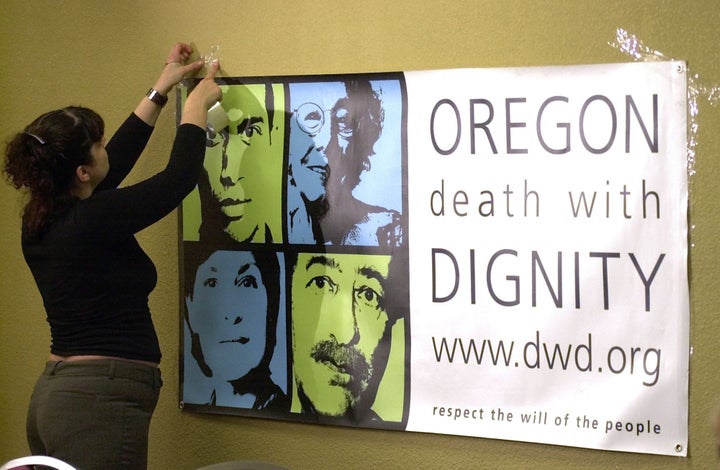
Seventeen years ago, the people of Oregon took a bold step in end-of-life care and comfort. By citizen initiative, they adopted eligibility criteria and practice guidelines for terminally ill, mentally competent adults to obtain medication that would ensure peaceful dying.
I was one of the drafters of that law, and I have stood by every word ever since. For years, when reporters asked what I would change in the law, I replied "one comma," to clarify that impaired judgment from any type of mental dysfunction disqualifies a patient from making a request. Subsequently, we did change that comma.
Fourteen years of experience integrating aid in dying into Oregon medical practice, three years replicating that experience in Washington and two years with a different regulatory model in Montana now inform policy-makers. Our work to craft subsequent Death with Dignity Acts and aid-in-dying policies reflects the wisdom gained from practice.
Opponents believed catastrophe would befall Oregon and medical practice would suffer, but the opposite occurred: End-of-life care is robust, thriving and increasingly patient-centered in Oregon. Thousands of patients find comfort every year knowing they do not have to suffer unbearably. No evidence exists of anyone harmed. Opponents' assertions to the contrary rely on vast conspiracy theories, fraud and cover-up by Oregon hospices and the hospice association, officials at the Department of Health, the medical disciplinary board and police departments in communities across the state. These scary stories hold no credibility, and polling reveals a full 77 percent of Oregonians support their Death with Dignity Act.
Proponents believed terminally-ill patients want and need assurance they can control the time and manner of their dying and will apply profound thought and care before ever exercising this control. We believed nothing could override doctors' drive to cure disease and prolong life, but that as death inevitably approaches, most doctors would allow qualifying patients this measure of comfort. Those beliefs have been validated.
Oregon's data and experience has revealed other truths. We could not have predicted all of them, but they carry important lessons for our future advocacy:
- Oregon's Death with Dignity law says patients may express a "wish to die." Data and experience contradict this. We now know patients approaching death and planning for peace have no wish to die. They wish only, if death is imminent, that it be as peaceful and humane as possible.
As the U.S. Supreme Court intended, Oregon has served as a laboratory to test the impact of a new end-of-life option on patients, physicians and end-of-life care. Washington's data and experience reproduced the findings from Oregon. The "laboratory experiment" is complete, and the results will inform our advocacy from now on.
We will work for policy that reflects community standards, establishes clear guidelines and guides physicians in safe and responsible aid-in-dying practice, without burdensome government reporting on every patient encounter. Bureaucratic paperwork has provided important data demonstrating the safety of aid in dying, but it is not responsible for making the practice safe. As is clear in Montana, physicians meticulously adhere to a standard of practice defined by the bounds of the Court decision, without the needless and intrusive burden of government reporting.
We will affirm the true purpose of aid-in-dying medication is to provide comfort and improve the quality of life for dying patients. Physicians intend to comfort, and patients intend to acquire the ability to escape unbearable suffering.
As advocates, we have defended the law from multiple attacks. As stewards, we have guided patients, families and medical professionals through the eligibility requirements, procedural guidelines and reporting duties of aid in dying. As investigators, we have observed the law's provisions play out at countless bedsides, living rooms and kitchen tables across the state. Medical studies, state reports and our own experience inform our "post-Oregon" advocacy. We must not ignore the lessons of Oregon's data and experience.